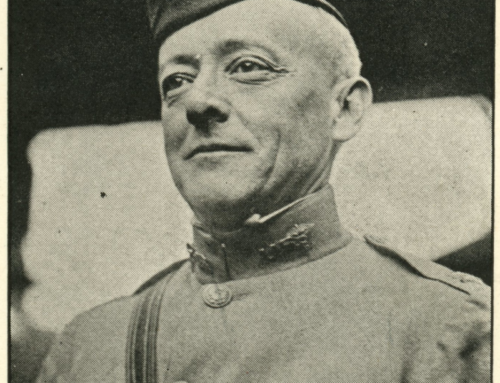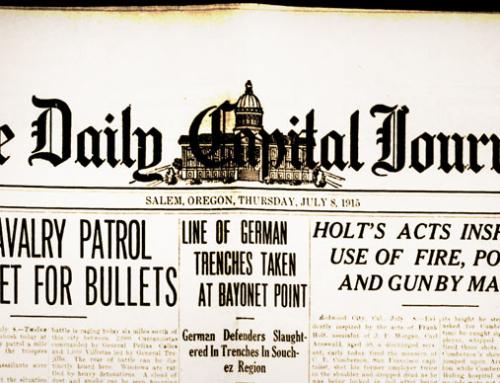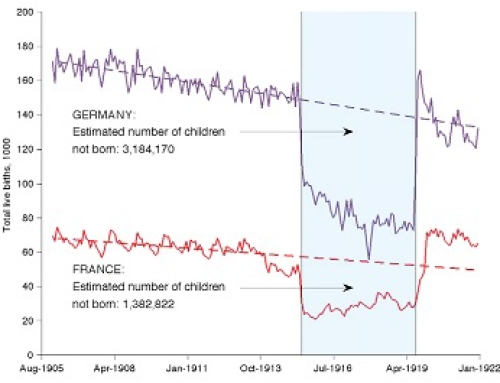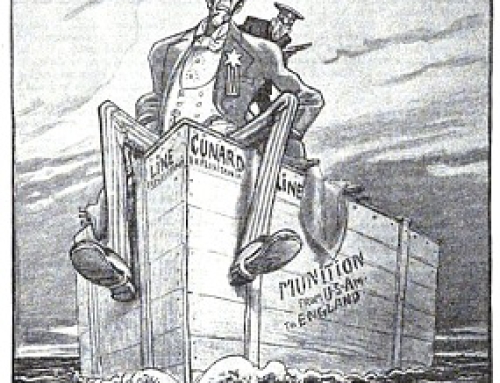by Richard van Pelt, WWI Correspondent
Contemplating the course of the war, the editor of the Capital Journal comments of changes brought about by technology:
THE SCIENCE OF KILLING
Great changes in armaments have been wrought by great wars. When guns and gunpowder supplanted the bows and the sword, the shield, emblem alike of national loyalty and personal safety, was made useless.
Always the struggle has been between offensive an defensive armaments for supremacy and effectiveness, with the advantage sometimes on one side and sometimes on the other. When the power of the guns had made great headway, Ericsson’s ironclad Monitor with one turret in a day put all splendid old-fashioned wooden frigates out of commission for fighting, and substituted the ugly but powerful floating batteries of today.
The close formation, which gave the supremacy to the heaviest battalions, prevailed from the time of the Roman legions to the Boer war. It has been retained by Germany to its cost, as the heavy massed battalions of the Germans have been turned back from Paris by a smaller force with modern artillery. It is safe to say no army will ever be drilled in those tactics again.
The sinking of great British cruisers by one small submarine and the easy destruction of Belgian and French fortresses by the German eleven-inch howitzers, discharging high explosives, foretell the abandonment of fortifications as at present planned, and the substitution of light but heavily armed and speedy cruisers for the more costly and slower battleships of today.
Doubtless other modifications of offensive and defensive armaments will be suggested before this terrible war in Europe is ended.







Leave A Comment